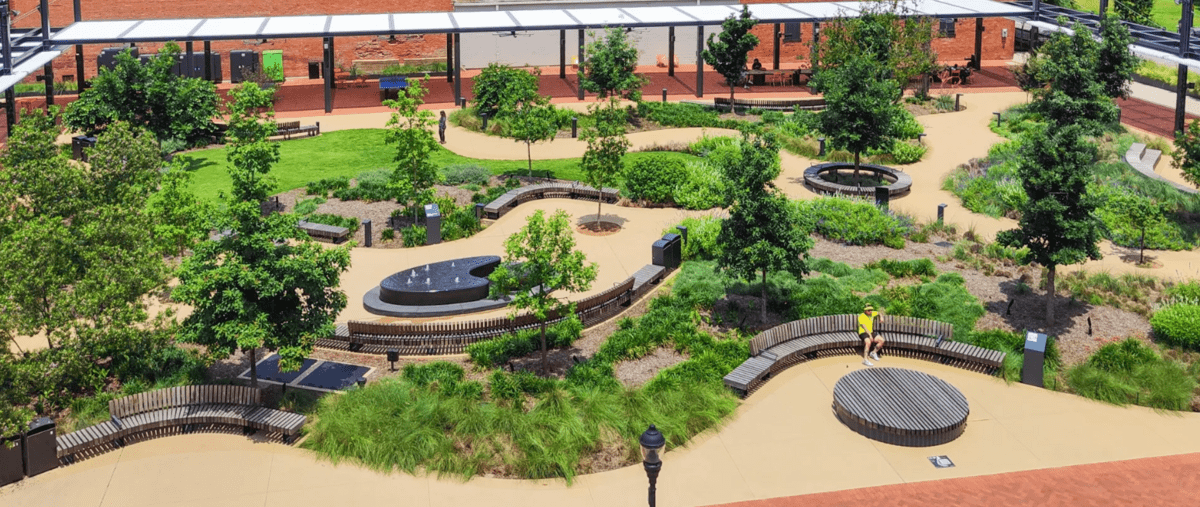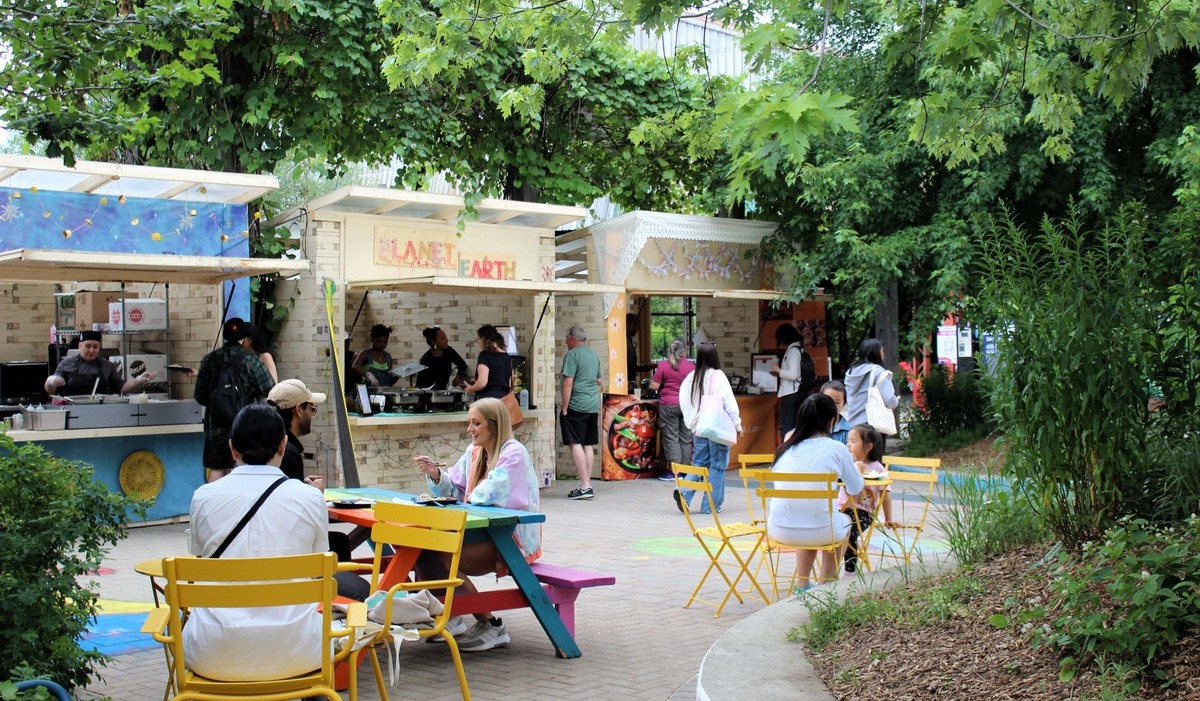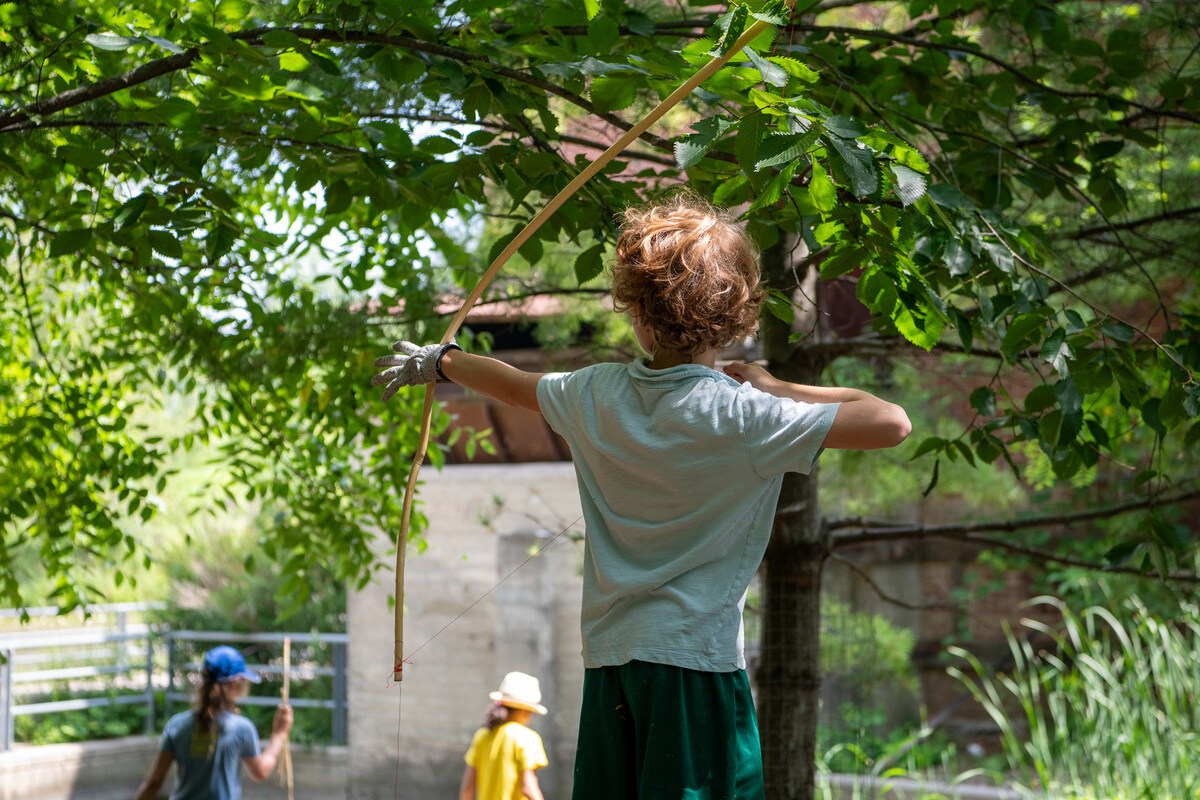But ample and diverse seating does more than enliven a public space; it makes people feel welcome and part of the community. It can even play a powerful role in shaping social dynamics, Shiell says.
“If it’s designed with intention — offering options for different postures, group sizes, and physical needs — it sends a clear message: ‘Everyone is welcome here.’”
Streetlife says designing seating starts with making it work for everyone. For children, they consider scale, engagement and playfulness; for seniors, they prioritize armrests, back support and comfortable seat heights; for people with mobility challenges, they design with transfer ease and clear space around seating.

West End Square in Dallas, Texas.
They highlight West End Square in Dallas, Texas, where Streetlife’s furniture is part of a broader redesign that turned a former warehouse district into a vibrant public space. Rather than treating benches and tables as add-ons, the design agency integrated seating as a primary activator of public life.
The variety of options included 15-metre-long tables for communal work, curved benches that encouraged wandering through the space and circular platforms that offered flexible seating for groups.
“As cities densify and grow, we see seating and street furniture playing a critical role in creating moments of rest, interaction and reflection,” Shiell says.
In Toronto, Streetlife’s furniture is part of the revitalization of St. James Park, where new benches around the fountain and a mix of seating options give people more places to sit and spend time.
There are plenty of examples of seating done well — so what’s keeping cities from becoming a seated utopia?
Broken benches, hostile architecture, or simply nowhere to sit, public spaces still have plenty of room for improvement when it comes to gathering. Shiell says one of the common mistakes is designing for aesthetics rather than usability and comfort.
“Too often, seating is placed without considering sightlines, shade or proximity to activity. Another pitfall is uniformity — using the same type of bench everywhere — which limits inclusivity.”
The struggle to find a place to stop, sit and enjoy the city has been on the minds of Torontonians the past few years.
Toronto-based journalist and author John Lorinc has written several articles on what he calls the city’s ambivalent relationship with seating in public spaces.
“Generally, the benches are in lousy shape and widely spaced, so it’s not a great experience, and certainly rarely for people watching,” Lorinc told Evergreen.
Last summer, he wrote in Spacing about how moveable chairs can transform public spaces. He says he was inspired by a trip to New York City, where the abundance of moveable chairs — and the people using them — showed what’s possible when seating is done right.

Moveable chairs at Evergreen Brick Works allows for flexible seating for groups of different sizes.
In that article, he quoted The Social Life of Small Urban Spaces, where American sociologist William H. Whyte wrote that seating should be socially comfortable — offering different types of seats, in the sun or shade, for groups or for individuals.
“I found out the number of benches in Toronto parks not long ago, and it’s a surprisingly small figure, relative to the size of the city and the area of our parks,” he says. “So, adding lots of benches would be a start, as well as some moveable.”
Pull up a chair
Want better seating options in your own city? Lorinc suggests starting by asking the City or your local councillor. As he points out, those offices are used to hearing about a broken bench — not necessarily requests for more places to sit.
If you want to learn more about innovative approaches to seating in public spaces, read Evergreen’s Climate Ready Schools Case Study. The pilot transformed a school ground from a flat, barren expanse with no seating into a nature-rich environment with seating options to rest, socialize and observe peers at play.






